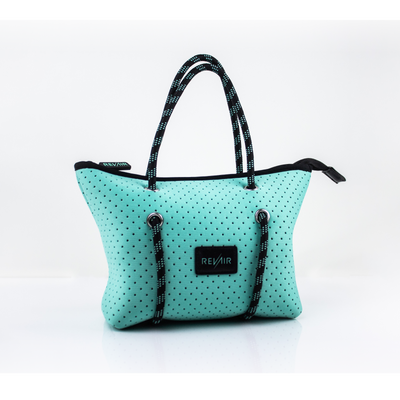
Hair Conditioning 101: High, Low, & Medium Porosity Hair

Hair and its subsequent conditioning and maintenance are close to the hearts of many women. Though some women may disregard hair care as a menial routine, there is more to it than meets the eye.
A styling here, a shampoo there, and a visit to the salon in between eventually add up to a number that will blow your mind and the hair above it.
So, how much time and money do we really spend on hair? Prepare to be shocked. Estimates put the amount women spend on their tresses throughout their lifetimes at $55,000 (on average).
Yes, you read that right — it's not five grand, it's $55,000. That's enough to finance a brand new car, clear credit card debts, and leave you with enough change to condition your hair. Heck, there are even states with houses that cheap.
Hair Conditioning in General
Most women perform hair conditioning immediately after washing or applying shampoo. The washing process as well as hair shampoo itself may leave one's hair dry, frizzy, or damaged. Hair conditioners have the oils, humectants, and fatty alcohols to make your hair vibrant again.
Now that we've learned the staggering amount of money we burn to maintain our well-being and keep our hair healthy, it's in our best interest to squeeze as much value as possible from our hair conditioning products and routines.
There's one question left: where do we start? One of the best ways to get the most value from your hair conditioning routine is to start learning about your hair. This will help your hair, be it for life or a special style for date night.
At one point in your younger years, you may have had the impression that all hair is the same. But as you mature and learn more about well-being and hair care, you may realize that hair is one of the most diverse parts of the human body.
What Is Hair Porosity?
There are so many characteristics that we can use to group and differentiate women’s hair. Many people are familiar with texture, length, scalp definition, moisture content, curl pattern, and limpness or fineness.
One term that most women are often not familiar with is the porosity of their hair. Porosity is a term that defines the ability of hair to absorb and retain moisture. Determining the porosity of one's hair will go a long way in helping them condition their hair better.
There are a few simple steps you can take to determine the porosity of your hair. It would help if you considered these tests:
- The H2O Test — To try out the H2O test, all you need are a few strands of your hair and a glass of water. Put the strands on a non-porous surface and put a drop of water on your hair. Watch closely how your hair reacts. If it quickly absorbs the water, its porosity is high. If it takes time to absorb the water, its porosity is low.
- The Shedding Hair Test — The shedding hair test also requires your shed hair and a glass of water. To perform this test, drop a strand of your hair in a glass of water. If the strand floats, your hair has low porosity. If your hair sinks, it has high porosity.
Types of Hair Porosity
Your hair's porosity will fall into three general categories: low porosity, medium porosity, and high porosity.
To better understand our hair's porosity and where it falls, we first have to explore our hair's building blocks. We can divide our hair structure into three:
- Cuticle — The cuticle is the outermost part of our hair. It comprises individual cuticles that overlap each other like the canopy in a rainforest.
- Cortex — The cortex is just below the cuticle. It is the middle and thickest layer containing fibrous proteins and pigments that give one's hair color.
- Medulla — The medulla is the innermost part of our hair and is closest to the hair shaft.
Low Porosity Hair
Low porosity hair usually has a thick cuticle layer that makes it difficult to absorb oil or moisture. In general, if you have low porosity hair, there is a chance that most of your conditioning products will remain at the surface and not go deep enough to moisturize your hair.
Characteristics Of Low Porosity Hair
Though we have given you the various tests that can help you determine the porosity of your hair, the most accurate way to find out is to look at the characteristics of your hair. You can conclude that your hair has low porosity if it has any of the following characteristics:
- Products may build up in your hair
- Washing and drying takes longer
- Hair looks and feels dry
- Hair tangles easily and is prone to breakage
- Hair dries quickly
- Hair really looks shiny
- Difficult to chemically and color treat
If your hair has most, if not all, of the above characteristics, feel free to classify it as low porosity hair. Hair that has low porosity isn't necessarily bad. It just requires conditioning and treatment that resonates with its qualities. Some of the things you should consider doing when conditioning low porosity hair include:
1. Regular Deep Conditioning
Low porosity hair responds well to deep conditioning. We advise you to deep condition your hair at least once a week. Deep hair conditioning will not only help your tresses gain moisture but also open it up for other products.
2. Dilute Your Conditioner
Many women with low porosity hair make the mistake of using higher doses of their conditioners. However, this is not helpful since the products, despite their quantity, will still not penetrate low porosity hair. A good solution is to dilute your hair conditioner with some water; this increases the product's chances of absorption into your hair.
3. Use Hot Oils
Different types of low porosity hair respond differently to hot oils. If your hair is fine with hot oils, you should consider using them during deep conditioning. Hot oils have lots of proteins that go a long way in helping hair break less and absorb more moisture and oils.
4. Always Pre-Poo Your Hair
Pre-pooing your air means applying a product before the shampoo process. Most hair conditioning products qualify for use as pre-pooing products. Moreover, you can create your own pre-poo recipes using oils such as sweet almond, jojoba, and grapeseed.

Medium Porosity Hair
Medium porosity hair is what many women consider okay. This means that your hair is neither too thick nor too porous. It strikes the delicate balance between absorbing and retaining moisture. Some of the characteristics of hair with medium porosity include:
- Minimal breakage and split ends
- Easy absorption and retention of moisture in the cuticle
- Hair holds style and is easily colored
- Slightly raised cuticles
- Hair requires slight maintenance
If your hair meets most of these characteristics, you may consider your hair moderately porous. Before you start celebrating, note that this hair can sometimes be as problematic as high and low porosity hair. This difficulty does not arise from its inherent characteristics, but the likeliness that the products used on this hair type are a mismatch. You should consider showing love to your hair by:
1. Moderate Dry Conditioning
With medium porosity hair, over dry conditioning is not a good idea. Too many oils and proteins can damage the hair and make it lose its medium porosity eventually. It would help if you only do dry conditioning once every two weeks or when you deem it necessary.
2. Use Light Oils When Conditioning This Hair
Since this hair moderately absorbs and retains moisture and oils, it is advisable to use light oils when conditioning this hair. Light oils that you should consider giving a try include argan, grapeseed, mongongo, and jojoba.
High Porosity Hair
High porosity hair easily absorbs moisture and oils. The cuticles in high porosity hair are too far apart, making it prone to overabsorption. So what are some of the characteristics of this hair type? You can consider your hair type highly porous if it:
- Rarely looks shiny
- Tangles easily
- Is prone to breakage
- Can't retain moisture and is hence often dry
- Absorbs and takes up color well
- Is prone to split ends
- Takes a long time to dry, even days or weeks
If your hair meets most of the above properties, then it is most likely high porosity hair. Like low porosity hair, there is nothing wrong with high porosity hair. The only thing you should remember is to customize your treatment and conditioning routine to this hair's characteristics — and you will be fine. You should:
1. Use Oily Conditioners
When conditioning high porosity hair, consider using conditioners that are rich in butter and oils. These can fill in the gaps within the cuticles, helping your hair retain more moisture.
2. Make Deep Conditioning Your Friend
Using deep conditioning products that balance moisture and protein will go a long way in helping your highly porous hair. The moisture will reduce the dryness that comes with high porosity hair, as the protein will heal breakage and split ends.
3. Consider Protein Treatments
High porosity hair is easily damaged. This is evident from the various breakage, thinning, and splitting synonymous with this hair type. Including protein treatment in your conditioning routine will go a long way in helping your hair heal.
To learn more tips about healthy hair, its characteristics, and how to treat and care for it, RevAir is the right place for you. For a long time now, RevAir has been a one-stop shop for healthy products, information, and everything revolving around haircare. For more information, contact us today and let us be part of your story.














